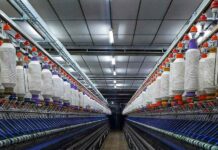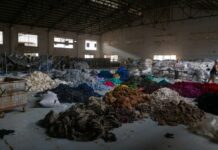The Joint Apparel Association Forum (JAAF) has expressed strong approval for the U.S. government’s recent decision to impose a revised 20% tariff on Sri Lankan apparel exports. This announcement comes as a significant relief to Sri Lankan exporters, who had been concerned about the impact of potential higher tariffs on their operations in one of their largest markets.
This new tariff structure aligns Sri Lanka with other key apparel-exporting countries, such as Bangladesh and Vietnam, which have also secured similar rates. It is viewed as a crucial move for maintaining the competitiveness of Sri Lankan garments in the global marketplace. Given that the U.S. accounts for approximately 40% of Sri Lanka’s total apparel exports—which amounted to around $4.8 billion last year—this tariff adjustment is expected to bolster the industry significantly.
JAAF officials praised the efforts of the Sri Lankan government, particularly highlighting the leadership of President Anura Kumara Dissanayake and the negotiating team led by Dr. Harshana Suriyapperuma, Secretary to the Treasury. Their proactive engagements with U.S. trade representatives have been instrumental in securing favorable tariff rates.
While the tariff relief is welcomed, JAAF Secretary General Yohan Lawrence noted that the effectiveness of this new rate will depend on detailed implementation, specifically concerning issues such as trans-shipment practices. However, the overall sentiment remains positive, with the JAAF emphasizing the importance of strategic planning to leverage this opportunity for growth.
As Sri Lanka’s apparel sector continues to navigate the complexities of international trade, the successful negotiation of the 20% tariff is seen as a critical step forward. It not only enhances the country’s competitiveness but also reinforces its position in a challenging global environment where maintaining market share is increasingly vital. Moving forward, Sri Lankan exporters are encouraged to innovate and adapt to meet the evolving demands of the U.S. market while capitalizing on the benefits of this new tariff structure.

































